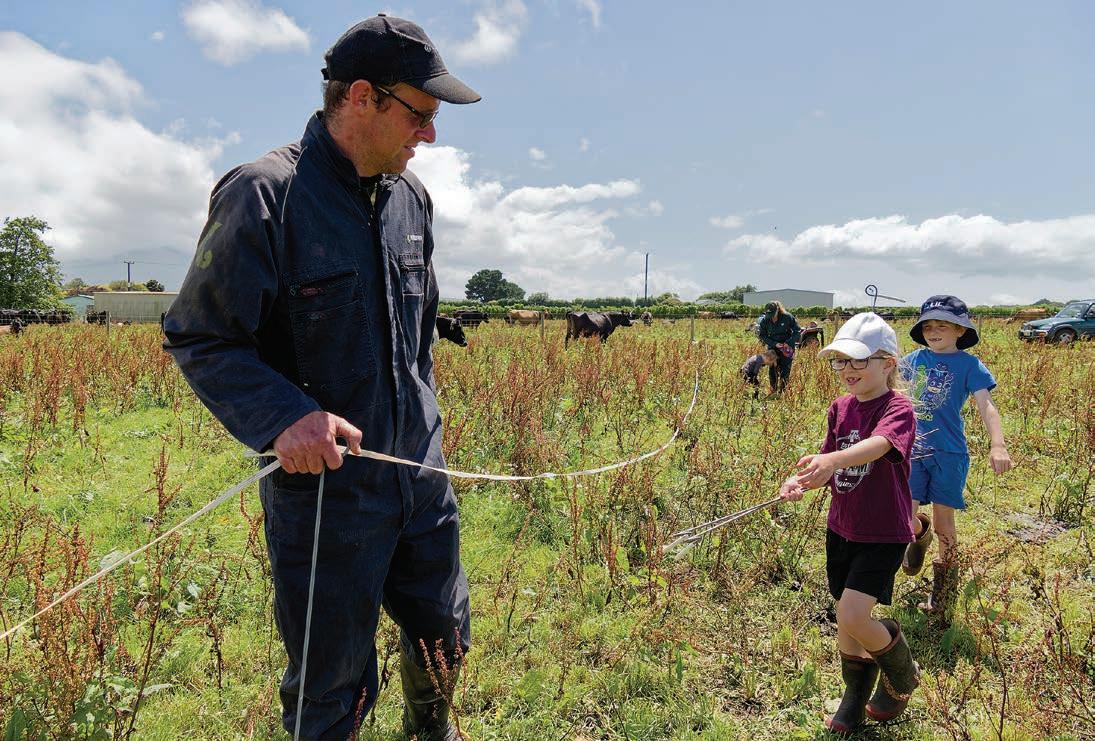
11 minute read
Zero to hero
by AgriHQ
A Taranaki couple experienced some tough times but overcame them to become award-winning farmers.
By Ross Nolly
Winning the 2022 Taranaki Dairy Industry Awards Share Farmer of the Year award was a dream come true for Murray and Rachel Perks.
Murray and Rachel Perks, along with their children Callum, 9, Matilda, 6, and Jack, 3, are in their first season as 50:50 sharemilkers for Murray’s uncles and aunt in the Abbott Trust Partnership, milking 325 crossbreed cows on the 94ha effective Kaponga in central Taranaki.
Murray had always wanted to win Taranaki Dairy Industry Awards (NZDIA) Share Farmer of the Year and last year he realised that dream. The couple won seven merit awards on the night and he remembers thinking that he shouldn’t count his chickens because it’s possible to win a number of merit awards and not the main award.
For the couple, winning meant recognition of their farming practices as well as an acknowledgment of the people who had helped them through some tumultuous times.
And at the Nationals, their winning ways continued. The icing on the cake was a third placing at the 2022 National Dairy Industry Awards Share Farmer of the Year, as well as winning two merit awards.
“It was really exciting to be recognised for what we’re doing and our passion for the industry. We’d hoped to get one merit award at the Nationals. We were absolutely thrilled to come away with two and a third placing,” Rachel says.
They first entered the NZDIA in their first year at the Opunake farm. When Murray worked for DairyNZ he was given advice that if they were considering entering the awards, they should do it in their first year of sharemilking. Even though they were unlikely to win, they would learn a great deal – and that is exactly what occurred.
“When we’d been back in Taranaki a few seasons, it seemed like all our ducks were starting to line up. One morning I was milking and thought ‘We should enter again.’
“I entered us during milking and went home and told Rachel that we were in the awards. I was in the mindset of going hard or go home.”
Rachel says: “The biggest benefit was the connections we made within the industry. The National awards experience was amazing. It was so positive meeting so many like-minded people who all want to do their best within the dairy industry.
“We started a chat group to share our farm experiences with those people and it’s been a great support. Every region is so different and it’s been really interesting learning about other people’s farm systems.”
Farm Facts
• Farm owners: Abbott Trust Partnership
• 50-50 sharemilkers: Murray and Rachel Perks
• Location: Kaponga, Taranaki
• Farm size: 96 hectare (94 ha effective)
• Cows: 325 Crossbred
• Production target: 2022-2023: 126,000kg MS
The high calibre of the regional winners has meant that if they’ve had big strategic questions, they’ve been able to put it out to the people in the chat group and get their opinions and recommendations.
Entering the awards forces entrants to examine every aspect of their business. A thorough presentation requires a “microscope” to be put on every aspect of their farm operation.
“I received some training from our accountant using some of the voucher money from the Taranaki awards to investigate hedging options,” Murray says.
“We ended up taking a hedging option for this season and set half of our milk production at $9.00. With the way things have gone, we don’t regret it. Things like that have helped set us up very well for our first season of 50-50 sharemilking.”
And after their early setback, they needed this security.
Murray was brought up around dairy farming and had always wanted to become a dairy farmer. The couple met at university in Christchurch, where
Continued page 22
Rachel was studying for a Bachelor of Speech and Language Therapy at the University of Canterbury and Murray for a Bachelor of Agricultural Science at Lincoln University.
He finished university a year before Rachel and moved to Hamilton to work as a DairyNZ consulting officer. Rachel followed a year later and worked as a fulltime speech therapist.
After completing his six-month graduate placement he gained another placement at Patetonga on the Hauraki Plains where he became involved in NZ Young Farmers.
“There were a lot of very good young sharemilkers in the region. It helped me decide that we should have a crack at dairy farming while we were young,” Murray says.
Rachel grew up on a Taumaranui, King Country, sheep and beef farm and had spent her university summer holidays working on a local dairy farm.
In 2012 the couple took on a variable order sharemilking position on a 90ha Opunake farm in coastal Taranaki, where they milked 350 cows for two seasons.

They began searching for 50-50 jobs, but had difficulty finding opportunities in Taranaki because they’d only been farming for two years. Then an equity partnership opportunity came up for them in Hokitika. The payout was $7.90 and things looked rosy, so after taking advice they accepted the job.
But “everything had tanked by the time we got there, and we ended up having to sell out at a loss, and return to Taranaki”, Murray says.
“Initially, I coped quite badly with the situation. When we were right in the depths of it, I remember saying to Rachel’s mum that I would be 40 before getting back to square one. It looked really bad when you projected it out,” Murray says.
“After returning to Taranaki and getting into a decent contract, it didn’t take as long to recover as we’d initially thought. It probably seemed worse than it really was when we were right in the heart of it.”
Rachel says even though it can seem a hard thing to do at the time, you must reach out and admit that things aren’t looking good. It’s important to connect with friends and family to seek help if needed.
“You kick yourself for missing all the red flags that should’ve been noticed. When the cards are down, that’s when your real friends come through for you. My best mate flew down to help us load the truck. And he got me into Young Farmers in Taranaki which put me in the environment that I needed at the time,” Murray says.
He describes a farm as sometimes being a goldfish bowl. During busy periods farmers are often on the farm for weeks on end. Sometimes when he takes the short drive to Kaponga it dawns on him that it’s been a long time since he’s been off the farm.
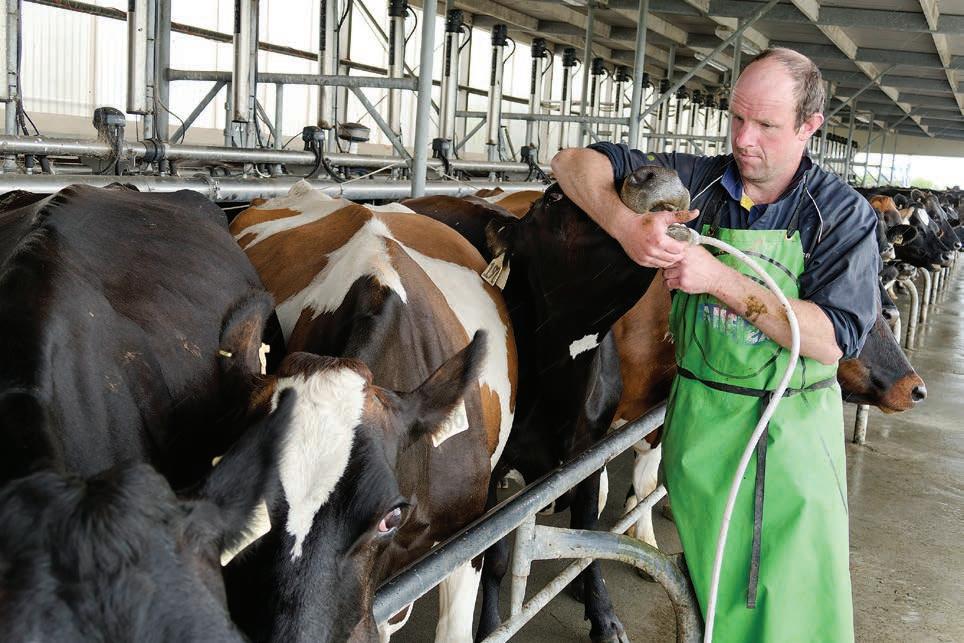
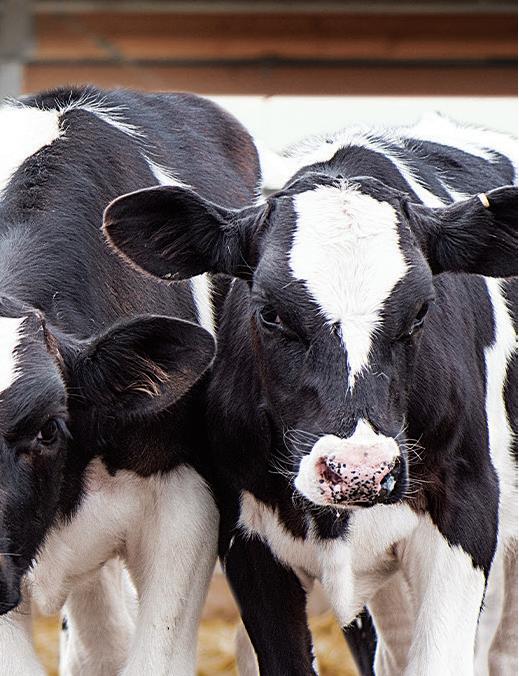
“We were pretty isolated at Hokitika because Callum hadn’t started school, so we didn’t have many community connections. There was nothing wrong with the region. It was just due to the situation we were facing at the time, and because we hadn’t been in the region for long,” Rachel says.
“When we returned to Taranaki, we were able to regain the mental health wellbeing aspects that we’d lost and reconnect with the community again.”
Murray says their experience taught him how to manage adversity. That experience helped them when their son Jack was born at 29 weeks, and they needed to spend 97 days in hospital.
“I remember ringing my aunty to tell her that Rachel’s water had broken and she asked me how I could be so calm. But I’d learnt to be,” Murray says.
Rachel now works as a behaviour specialist at Explore Specialist Advice. This allows her to work part time and relieve on the farm when needed.
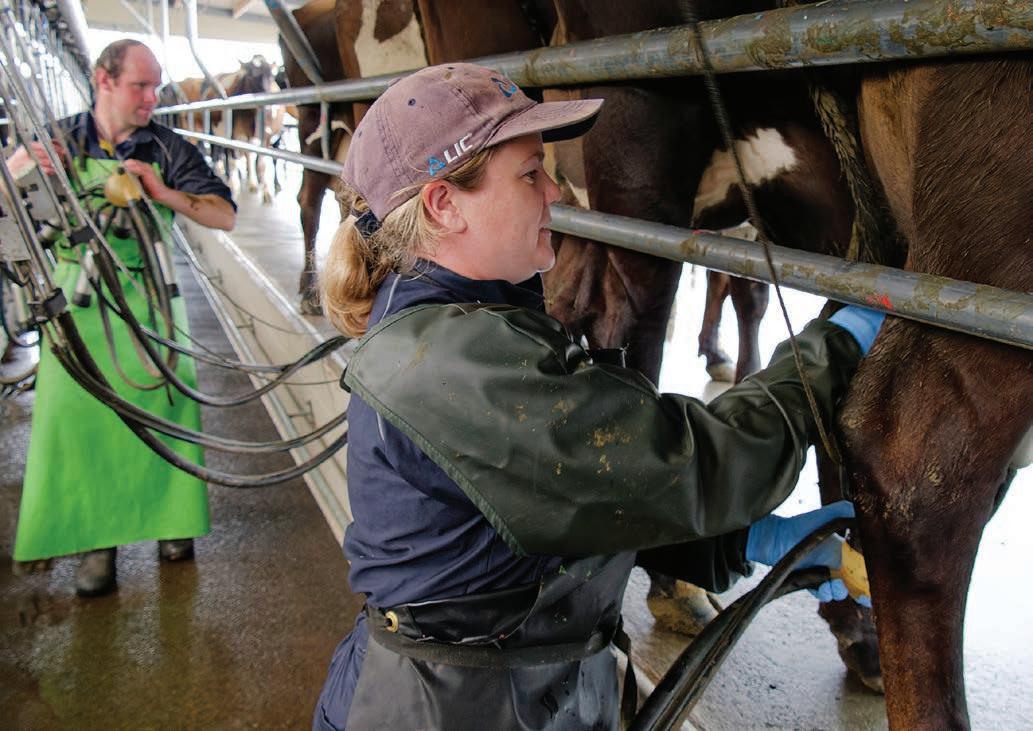
“I work with adults and children with intellectual disabilities and autism. They’re challenging behaviours, so it’s an
Continued page 24 interesting role. It’s very different to what I do on the farm and gives me variety,” Rachel says.
“I meet people from a variety of backgrounds and many of them are very interested to learn about the dairy industry. It’s nice to be a positive advocate for the industry.”
Prior to taking on the 50-50 role, they spent six years as variable order sharemilkers milking on one of the other Abbot family farms.
This is their first year on the 94ha System 3 farm at Kaponga and they are still learning the property.

The farm utilises 17.5ha of a 50ha support block that is divided between three family farms. They have one fulltime staff member and employ a parttimer for eight weeks during spring.
“This year we’re being conservative and targeting 126,000kgs MS, which is about 1,300kg MS per ha, and around 390kg MS per cow. Last year was the farm’s second-best season and we’re very close to that at the moment,” Murray says.
The farm utilises Protrack and ACR and he prefers to use basic tech such as GPS mapping for tracking pasture rates and MINDA LIVE for their feed wedges.
Due to the recent rain, they’re utilising 40-day rounds. They usually use a 30day round, but want to keep some feed ahead of the herd. Once autumn arrives they typically push out to a 40-50 day round.
This year they tried something a little different. After the last of the rain they pushed the round out rather than making silage.
“I knew the pasture had already gone to seed, so we weren’t going to lose quality. It’d been a costly season, because we never really had a spring flush. It was very wet and the grass didn’t grow. We fed all of our grass silage, and began feeding maize silage and PKE, which we never do in spring,” Murray says.
“We decided that when grass growth started and we had a chance to be all grass, I’d make it last as long as possible to save money. Otherwise we’d have to make silage. It seemed to work and tied us over, so we didn’t have to feed out until the late January rain arrived. We may have lost a little production, but we didn’t have to make silage or buy feed.”
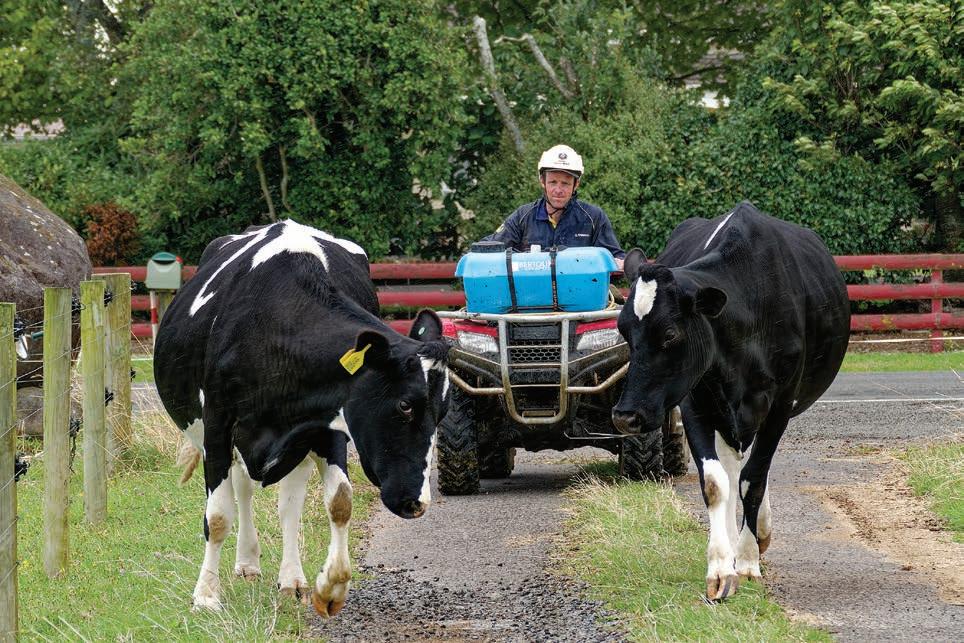
Five hectares of maize is grown at the support block and they buy in extra maize, hay and some PKE. Grass is harvested from the support block for pit silage. On the milking platform, if the grass is too long they make pit and baled silage.
“This season was weird. When the grass was meant to be growing at the start of October, I was wondering where our silage was going to come from. We ended up going against the textbook a bit by feeding extra PKE to generate a false surplus,” Murray says.

“Our thinking was that because we don’t have a feedpad, we needed to make grass silage for winter because we can’t feed PKE. It did irk me a bit, but it’s just what we had to do and it’s the first time we’ve ever had to do it.”
They use the old-school method and oral-drench the herd during milking, which has reduced the number of down cows. Drenching guarantees the cows receive the correct dosage.
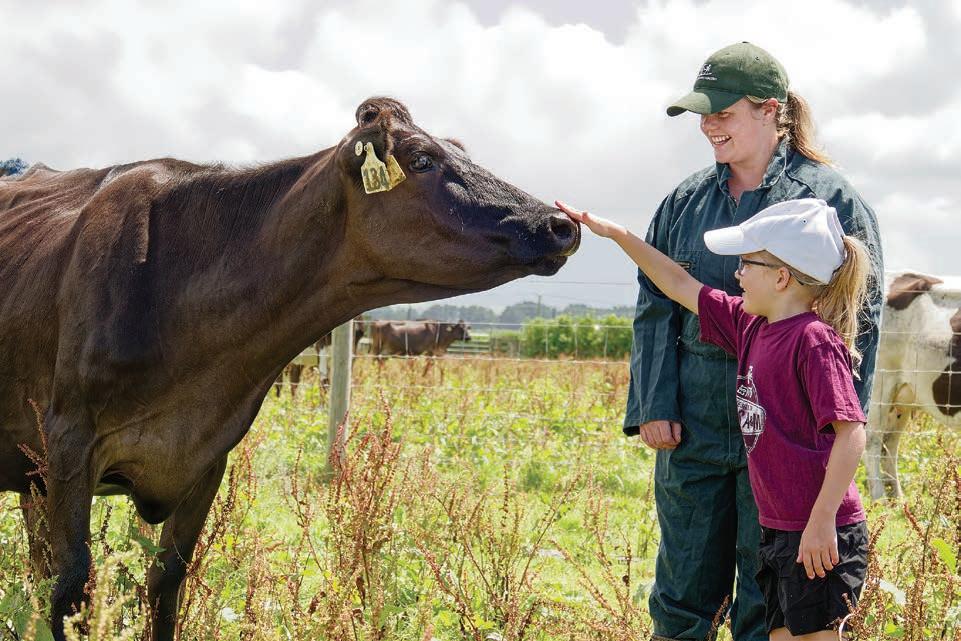
“I can quickly drench the colostrum cows twice daily. It’s extra work, but I feel it’s more effective than pasture dusting. You spend more time in the shed drenching, but you’re not spending time on downed cows, and I’d rather it that way,” he says.
“You also get to check each cow daily. We haven’t started using zinc yet. But because the zinc goes down the throat rather than in the water, we get better overall coverage.”
Continued page 26
We were introduced to Animate at the beginning of the season and what a game changer it has been for us. We had a total of six down cows for the entire calving, something we can only put down to Animate.
It was easy to use, the cows loved it, was a massive time saver and there is nothing better than seeing your cows happy and healthy.
Sarah Woodley, 420 cows, Clandeboye, South Canterbury.
Calving begins July 20 and is finished by the first week of September. Murray says that it’s a good timeframe for setting up labour, because they have a part-time employee for eight weeks over spring so they’re able to get the hard work done quite quickly with that extra labour unit.


Calves are collected twice daily. They began doing this to protect cow health after having a bad run of mastitis. By collecting the calves twice daily the cow comes in for milking sooner, which prevents their udder becoming swollen. It also means that the calves get gold colostrum sooner.
“The replacement calves receive two tubed feeds of gold colostrum. Our fulltime employee feeds the calves and I help out where needed. We feed warm colostrum and milk through a calfeteria and when that runs out we switch to vat milk,” Rachel says.
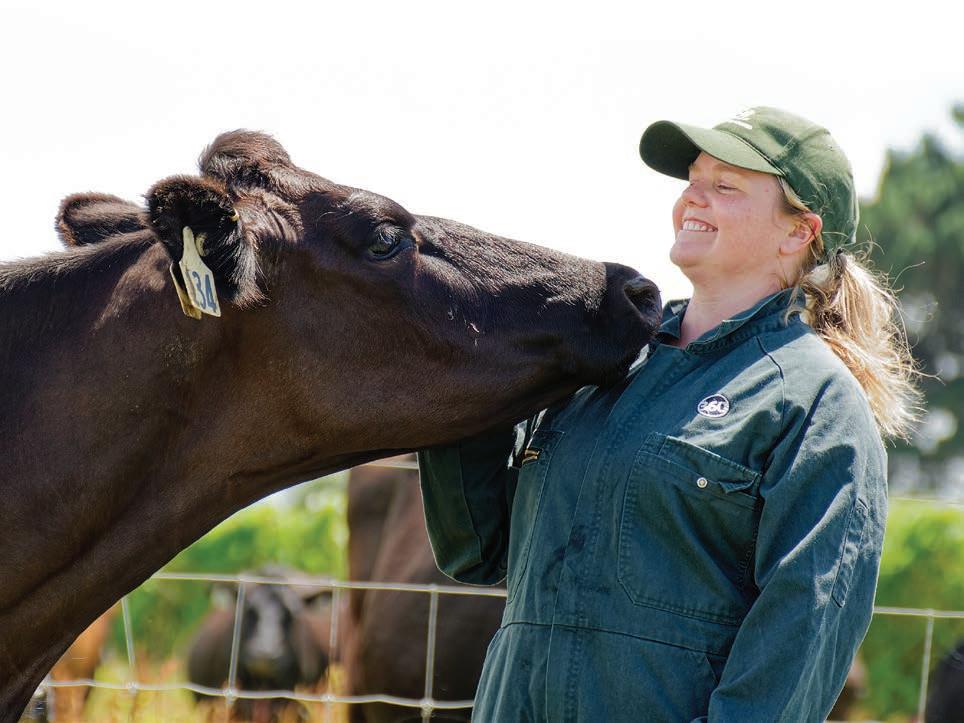
They have access to hay and meal from day one and are weaned at 80kg. After weaning, the calves stay on the farm for a couple of weeks before going to the support block.
They remain there until May before going to grazing at Tarata in east Taranaki and come home as in-calf heifers. They are mated with Jersey bulls about two weeks before the main herd. This year they pushed the start of mating back five days to October 22 and they use AI for all matings. The first five and a half weeks is used to get 80-90 replacements, before 10 days of short gestation Herefords as a marker. The remainder are finished off with shortgestation dairy bulls to achieve an 11-andhalf-week calving period.
They mostly use the genomic team of bulls and some daughter-proven bulls. They haven’t really delved down into individual bull selection yet, but it’s something they’re looking to in the future.
“Typically we have a 77-80% sixweek in-calf rate. Our in-calf rate has been quite variable. When we went solely AI our in-calf rate was 87% and the following year it was 82%. We then started using teaser bulls, which helped a lot,” Murray says.
“Our cows are in the 475kg range. Some of our best cows have a shorter stature and a ginger hue. They don’t look anything spectacular, but are our most efficient cows. They’re the ones that just chug along working hard for you. I’d probably prefer a line like that,” Murray says. A new effluent system was installed last autumn to replace the three-pond system and land-based application system.
The effluent is pumped from the first pond and the remaining two ponds will be emptied and disestablished. A travelling irrigator is set up to run on night power and covers approximately 33% of the farm.
“It’s amazing how much difference the effluent makes to the soil’s moisture and nutrient levels. We had some paddocks that hadn’t grown well and we targeted them with effluent which made a big difference to their pasture growth,” Murray says.


After returning from the West Coast they’ve ensured that they make time to relax and unwind. Each summer for the past five years they’ve gone camping with their kids and they always plan a winter break.
“I play hockey in winter and have started playing indoor soccer during summer. I enjoy the governance side of farming and have become involved in DairyNZ’s Dairy Environment Leaders programme and helped start Taranaki Catchment Communities,” Murray says.
Rachel likes the fact that their children are being brought up on a farm and will have a similar upbringing to her own.
“Farm life teaches kids life skills that they can’t learn anywhere else. They discover where their food comes from and learn empathy towards animals,” Rachel says.
“I’m president of our local playcentre and try to leave Thursdays free for that. I focus on trying to keep myself active and am about to compete in the Spirited Women All Women’s Adventure Race, which will be my second adventure race.”
The couple would like to build towards farm ownership, but in the short term paying off the herd and giving their children a good education are their priorities.
“Sometimes when you’re milking you catch yourself thinking ‘These cows are actually ours.’ We’re fortunate to be working for family because we have job security and know that we won’t have to look for a job every three years,” Murray says. n
